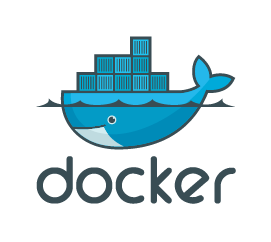What is Dockerengine?
 Overview
Overview
Docker Engine is the core componentheart of DockerDocker, a technology that enables containerization. It allows developersyou to create, manage,create and run lightweight,small, portablelightweight packages called containers. These containers are like tiny virtual machines but much more efficient. They contain everything an application needs to run, including the code, system libraries, and settings, so it behaves the same on any system.computer.
Docker Engine consists of the following major components:
- Docker Daemon: This is the background service that handles container management on a
daemonDocker(whichhost. It listens for Docker API requests and managescontainers),thealifecycle of Docker containers, including starting, stopping, and monitoring. - REST API:
(forThisinteractingAPI allows external tools and programs to communicate with thedaemon),Docker Daemon, making it possible to manage Docker resources programmatically. - Docker CLI: The Command-Line Interface (CLI) provides users with the ability to interact with the Docker Daemon using commands. It allows for creating and
amanagingCLIcontainers,(Command-Lineimages,Interface)networks,forandrunningvolumesDockerfromcommands.
the terminal.
Docker Engine operatescan run on topany ofLinux-based aoperating hostsystem, systemincluding distributions like Debian, Ubuntu, orand anyCentOS, as well as other systems like Windows and macOS using platform-specific adaptations. On Linux distribution. The engine interacts directly with the host OS kernel, which allowssystems, Docker containers to share the host's kernel, making them muchlightweight and highly efficient.
How Does Docker Engine Work?
At its core, Docker Engine uses a client-server model. You, the user, interact with Docker by typing commands (using the CLI) or through other software (via the REST API). The Docker Daemon (the server part) listens to these requests and manages all the containers on your system.
-
Images and Containers: Containers are created from something called images. Think of an image as a template or blueprint for a container. When you run an image, it becomes a container that can actually perform tasks.
-
Layers and File System: Docker Engine makes things more
lightweightefficientcomparedby building containers in layers, where each layer represents a change or addition tovirtualthemachines.
image. This way, Docker doesn’t need to rebuild everything from scratch each time you make changes. -
Isolation and Resources: Docker Engine uses special features in the Linux kernel (the core of the operating system) to isolate containers from each other, ensuring that one container’s actions don’t affect another. It also controls how much CPU, memory, and other resources each container can use.
Key Features of Docker Engine
-
Lightweight: Containers
sharedon’t need their own operating system; they use the hostOSsystem’skernel,resources.makingThis makes themmoremuchefficientsmaller and faster thantraditionalvirtualmachinesmachines.(VMs). -
Portability:
DockerOncecontainersyoucancreate a container, it will runconsistentlytheacrosssamedifferentwayenvironmentson(development,anytesting,systemproduction).that has Docker, no matter where it is. This makes it easy to move your application from your computer to a cloud server or any other environment. -
SpeedFast: Containers startandupstopalmostmuchinstantlyfasterbecausethantheyVMsdon’tduehave totheirloadminimalaoverhead.whole operating system. This makes them ideal for quick testing and development. -
Isolation: Each container
runshas its ownisolatedenvironment,ensuringmeaning that your application and its dependenciesdon’won’t interfere witheachotherother.applications on the same system.
More Capabilities of Docker Engine
-
Networking: Docker Engine allows containers to communicate with each other and the outside world through networks. You can connect containers together or expose them to the internet easily.
-
Storage: Docker Engine can manage data that needs to persist even when containers are restarted or deleted. It does this using volumes (for storing data outside of containers) or bind mounts (which link folders on the host system to containers).
-
Orchestration Support: For larger applications, Docker Engine works well with tools like Docker Swarm and Kubernetes. These tools help manage and automate the running of many containers at once, often across multiple servers.
